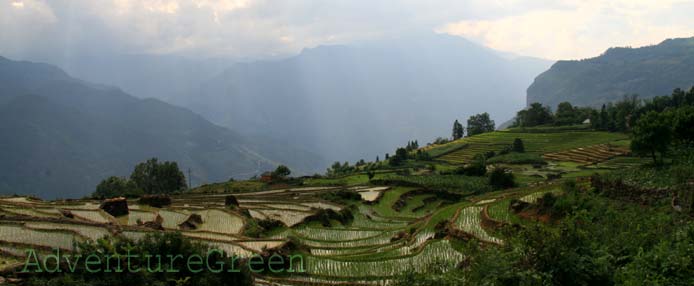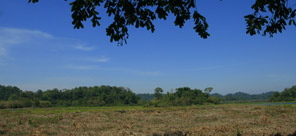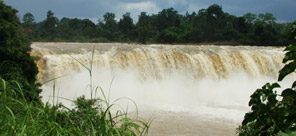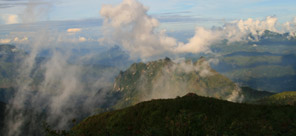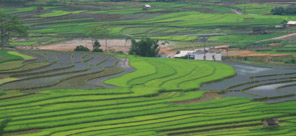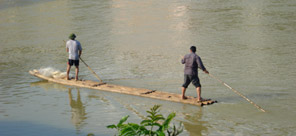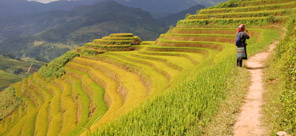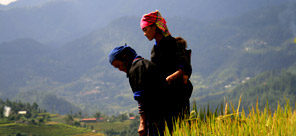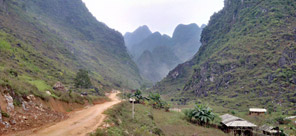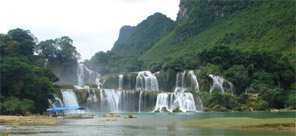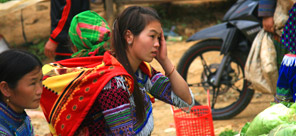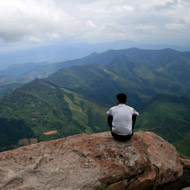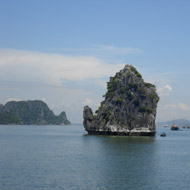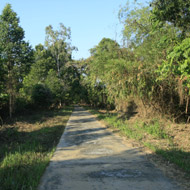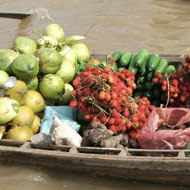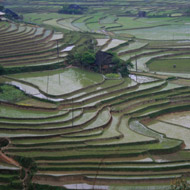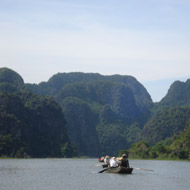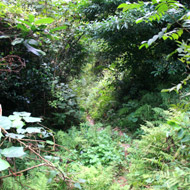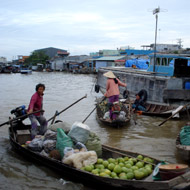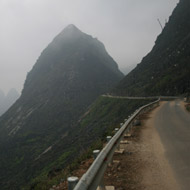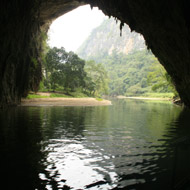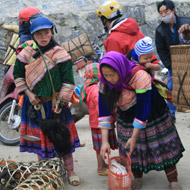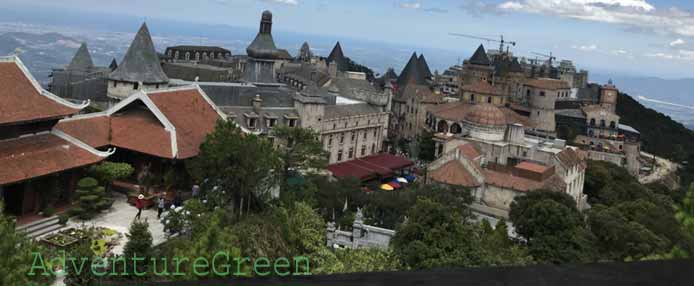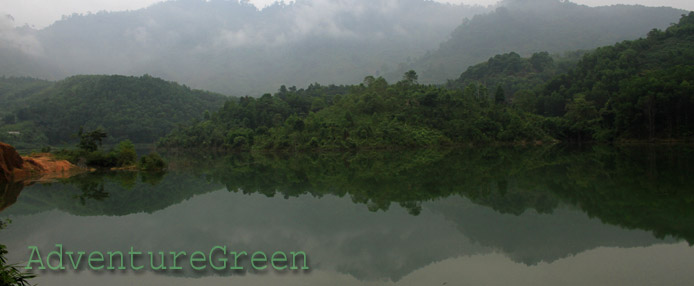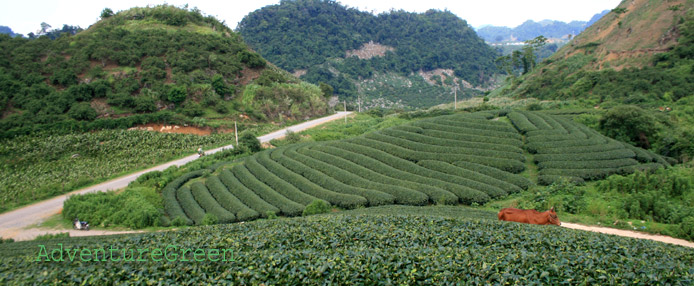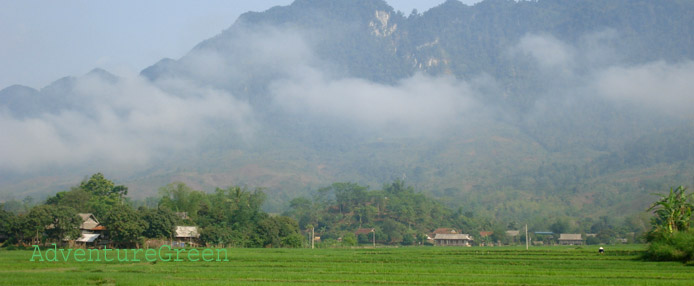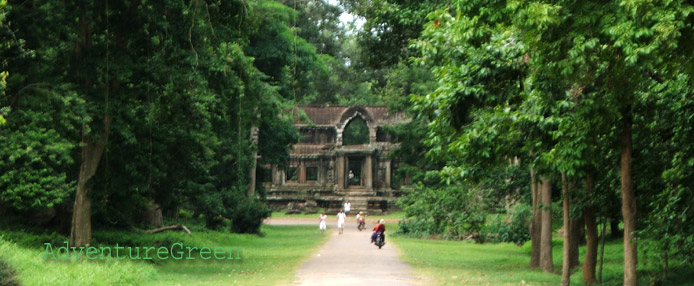Good weather is an extremely important factor for great holidays. For those who embark on adventure holidays with AdventureGreen, the weather is in some way vital for successful adventures. Why? Because we follow the less travel roads: cycling on country back roads, mountain-biking on slippery mountainous paths, motorcycling in the far-flung regions of Vietnam, trekking in muddy and slippery and steep mountain slopes or in a jungle, or on high altitudes with harsh weather conditions…
Embarking on an adventure, we do have to expect the unexpected. But taking an adventure does not mean to take foolhardy actions at all. All possible risks have to be factored in and calculated carefully; all aspects of your trip have to be carefully planned by experienced adventurers. We can not control the weather, but we can forecast the weather based on statistics and our experience for several years. A better experienced travel agency and tour operator as AdventureGreen does make every experience of yours with us a better one!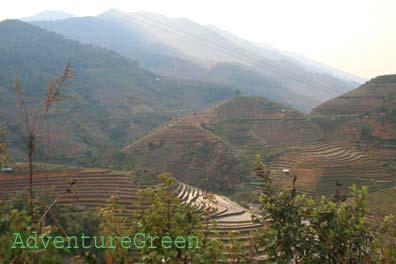
Now back to the weather in Vietnam in January, it is cold winter in North Vietnam, about to the the end of the rainy season in the Central Coast of Vietnam, dry season in the Central Highlands and the South of Vietnam. At this time, the provinces to the north of the Hai Van Pass of the Central Coast Region has cooler temperatures than those of the Central Coast Region to the south of the Hai Van Pass.
1/ North Vietnam
The North of Vietnam has a cold winter which is caused by the northeasterly monsoons from Siberia blowing through Russia, Mongolia, mainland China and another route via the coasts of Russia, Japan, Korea, China and Vietnam. The monsoons which travel via the mainland are drier than those blowing at sea and along the coast.
In January the North of Vietnam is also affected by the easterly winds (blowing from east to west), southeasterly winds and westerly winds on high altitudes. Normally the northeasterly monsoons are the dominant winds affecting the North of Vietnam and it is then dry and cold. Anytime when the northeasterly monsoons meet with the other winds, then it rains a couple of days until the northeasterly monsoon is more dominant again.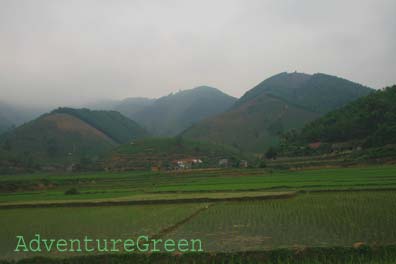
The northeasterly winds come in successive spells and that means they tend to be weaker in between spells. When the cold monsoons are weaker and another wind of the above is stronger, it is moist in the North with higher temperatures for a couple of days. A new spell of cold winds come, then this causes rains in the North of Vietnam for a couple of days. Depending on if it is westerly winds on high altitudes or the easterly winds that it rains more in the Northwest or in the Northeast. Normally it is the Northeast of Vietnam that has lower temperatures and that has more rains than in the Northwest; but it may rain more in the Northwest if before the arrival of a new spell of cold winds, the westerly winds on high altitudes are strong.
So, what does it all mean to your adventure holidays in Vietnam? Well, the far-northern mountains are great for adventure travel and that is where AdventureGreen hosts several adventure tours every year. The Northeast of Vietnam includes: Halong Bay, Lang Son, Cao Bang, Bac Kan. There are few other provinces and cities but we do not need to mention them here. Except for Halong Bay, the other provinces have very low temperatures in January ranging from below 10oC (even below freezing point) to 18oC.
AdventureGreen operates trekking tours in Cao Bang and between Cao Bang and Lang Son, in Ba Be National Park (Bac Kan), bicycle tours and motorbike tours in all the Northeast. January is a good time for these adventures; but it is not the best because of unexpected rains (light ones and not often though!) and sometimes extremely cold weather.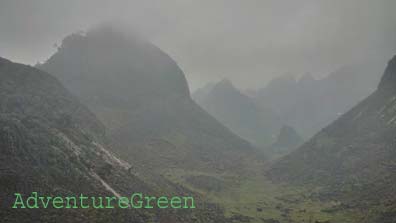
Ha Giang is smack in between the Northeast and the Northwest but it tends to have similar weather patterns to the Northeast. Ha Giang has high mountains and a plateau (Dong Van Plateau) which blocks or lessens winds traveling between the Northeast and the Northeast. This may be the reason that Ha Giang tends to have more rains! Yes, it is very cold, often below 10oC in Ha Giang in January. You go trekking, motorcycling, or taking a car adventure with us in Ha Giang, be prepared for the harsh weather conditions.
The Northwest of Vietnam, which are of important to AdventureGreen adventure tours, includes Hoa Binh, Son La, Dien Bien, Lai Chau, Lao Cai and Sapa, Yen Bai. In most cases, you can have a good time trekking in these destinations. Those who climb the Fansipan or Ky Quan San (Bach Moc Luong Tu) may have a hard time as it may be freezing cold or may be having snow.
It is worth to note that the foehn wind starts having effects in Son La, Dien Bien and Lai Chau in January, especially at the end of the month. This means these provinces start having higher temperatures (18-28oC) and drier air compared to the rest of the North of Vietnam. Anyway, these temperatures are great for adventure tours like mountain climbing, trekking, cycling or motorcycling tours.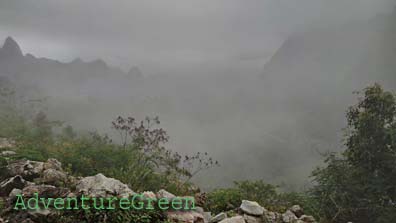
2/ Central Region (Central Coast) of Vietnam
January is coming towards to end of the rainy season in the Central Coast of Vietnam and the rains are more tolerable. But for the last couple of years (2017-2019), the rains lingered more and heavy rains have been found during this time of the year. Do expect rains in case you plan for beach vacations in Quy Nhon, Phu Yen or Nha Trang (Khanh Hoa).
3/ Central Highlands and South of Vietnam
The Central Highlands and the South of Vietnam are in dry season with lovely sunshine. Expect 14-30oC in the Central Highlands (13-20oC in Da Lat), 23-33oC in the South of Vietnam. Those who are on a cycling tours or budget tours with AdventureGreen in the South should have a good time in January. Those who expect sultry beach holidays should have a good time also. Do not be surprised as you’ll encounter a few warm days (33-34oC) in South Vietnam in January, more likely in Saigon and cities.
So, it may not be perfect but January is a good time to visit Vietnam, be it you take budget tours or adventure holidays in the country.



